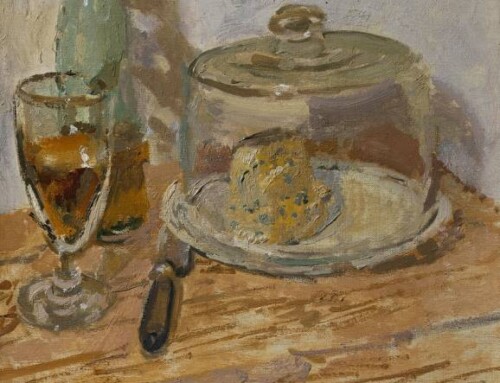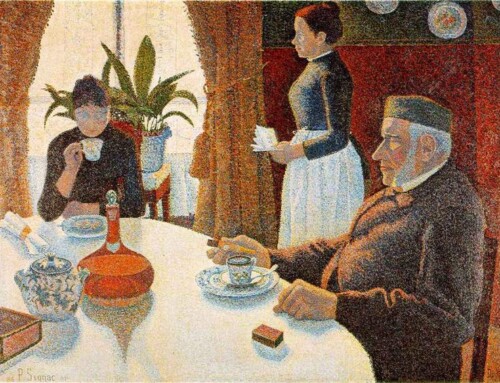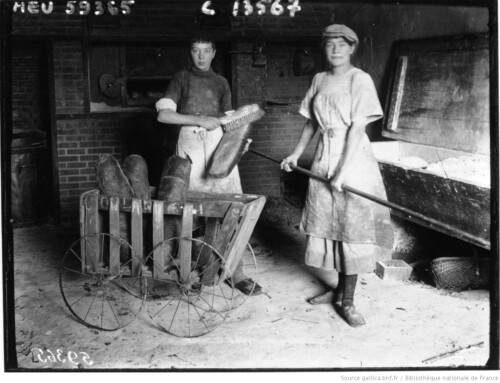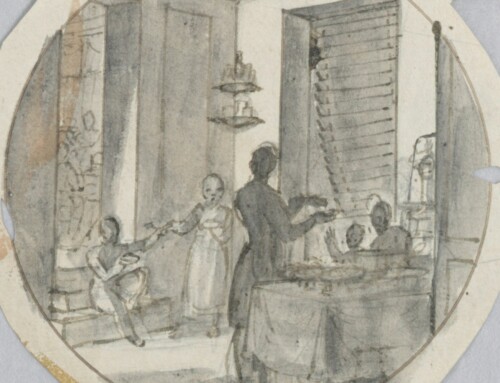What is “home”? Where can “home” be?
- In an April 2001 interview for the magazine Label France (published by the French Ministry of Foreign Affairs), Gao Xingjian (b. 1940) spoke of certain moments that had led him to Paris:
Label France: How did you come to write and to settle in Paris?
Gao Xingjian: In high-school, I was just as good at mathematics as I was at art or writing essays. My mother did not want me to go to the School of Fine Art; at the time, painters lived in great poverty, in servants’ quarters. Then one day, by chance, I came across an extract from the memoirs of Ilya Ehrenbourg. In them, he described his life in Paris in the early 1920s, and recounted how he had seen a woman enter a café, place her baby on the counter and slip away, saying she had an errand to do. She never came back. The woman who owned the café demanded an extra tip from all the customers to help raise the child. This story affected me deeply — I wanted to live like that. So I decided to learn French.
I remember too that my French teacher, in China, was also nostalgic about the Paris cafés in the days of his youth. He explained in class what a Paris café was by drawing in chalk on the blackboard a series of women’s shoes, with high heels, pointed, or with laces…
At the age of fifteen, having read an anthology of Prosper Mérimée’s work, I had a dream. I was sleeping with a woman of marble, beautiful and cold, a statue fallen to the ground in the grass of an abandoned garden, and I lost myself in an exuberant freedom. It is that freedom, what at home they call “decadent”, that brought me to France.
(Click here for the full interview.)
- In a July 2019 interview for the website Île en île, Daniel Maximin (b. 1947) thought of his quartier in a way that includes the following:
Très tôt pour moi, Paris était aussi Présence Africaine, une librairie qui était une capitale du monde noir. Les étudiants, les écrivains et intellectuels se retrouvaient debout dans la librairie au milieu des livres. Pour moi, Paris, c’est Senghor, Damas, Césaire, Cheikh Anta Diop et Fanon. Ce sont des gens qui se sont côtoyés et qui sont dialogués parfois même dans le précarré du Quartier Latin autour de trois ou quatre cafés. Et puis, quand j’étais étudiant, Paris était le Tiers monde avec les Arabes, les Algériens et des gens de l’Inde. Ça se voit beaucoup aujourd’hui dans les rues et dans les restaurants. On a le choix de toutes les cuisines du monde à deux pas de chez soi. En particulier, moi dans mon 10e arrondissement, on voit comment j’ai pu être ici et pas en exil. Pour moi, c’est la chose la plus importante. L’exil en un mot n’existe pas. L’ex île (en deux mots) existe ; c’est le titre de l’un de mes poèmes. On sort de l’île. Paris n’est pas une capitale de la France ou une capitale francophone et caribéenne ; on n’est pas limité.
(Click here for the full interview.)
- In a March 2015 interview for the Consulate General of France in New Orleans, Louisiana, the question “Pour vous ressourcez, où posez-vous vos valises?” was posed to Fabienne Kanor (b. 1970):
Je me suis posé la même question dernièrement et savez-vous le nom qui m’est venu immédiatement en tête ? Orléans. Pas la nouvelle, là où je suis actuellement, mais la vieille, la vraie, celle où je suis née et où j’ai grandi. S’il est vrai que je n’aimerais pas vivre dans cette ville, il y a, lorsque j’y passe, quelque chose de rassurant, de paisible, d’éternel. C’est sans doute le seul lieu où je peux rester en pantoufle et en chandail, accepter de laisser la télé allumer toute la journée, supporter de rester des heures autour d’une table bien garnie en compagnie de mes quelques cousins et de mes tantes.
(Click here for the full interview in English or French.)

Anonymous artist, in the style of Edouard Manet (1832-1883). Bon Bock Café, 1881. National Gallery of Art, Washington, D.C. → https://www.nga.gov/collection/art-object-page.52182.html




